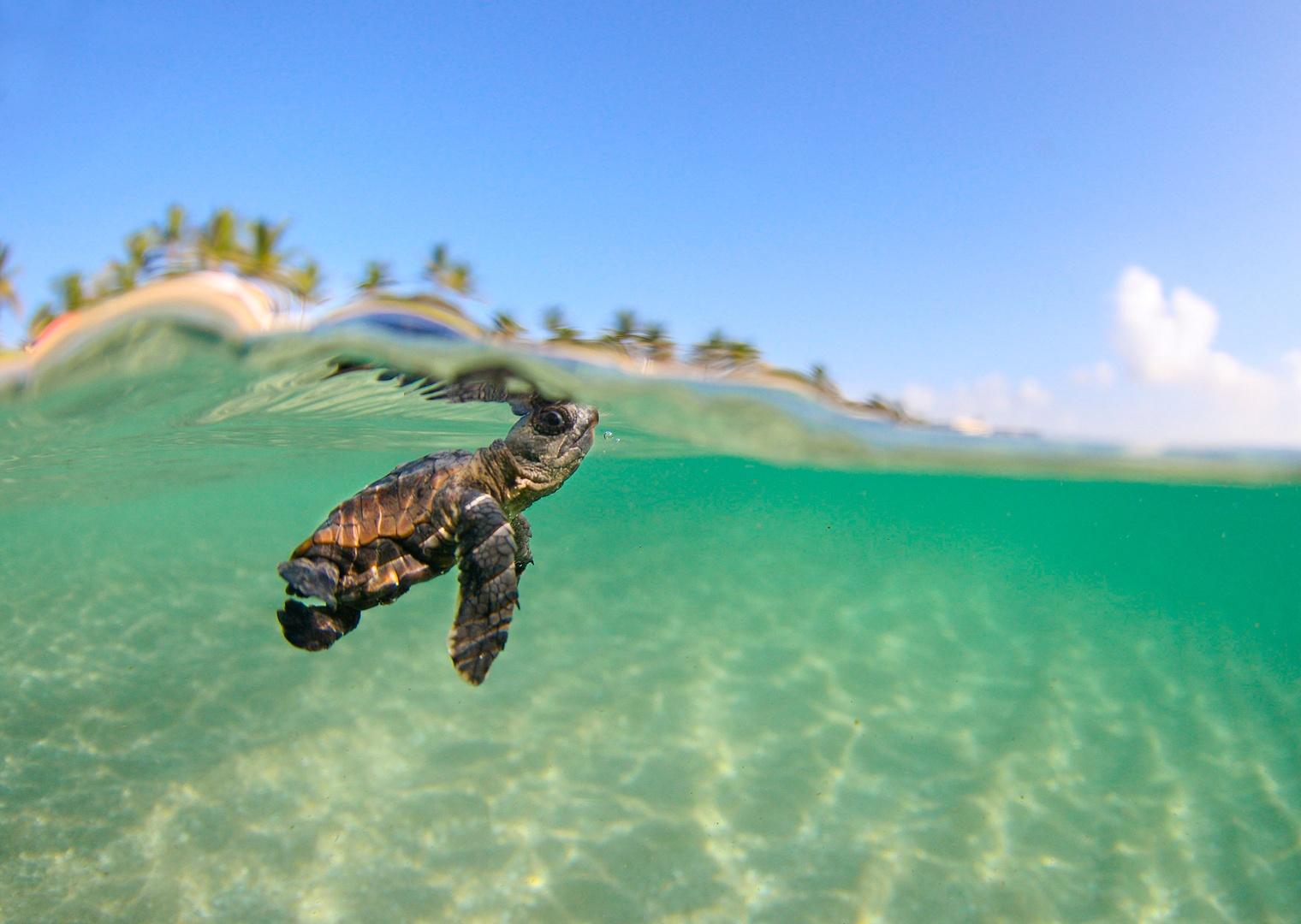

The sand must be deep enough for the female to produce a suitable nest. Sandy beaches are ideal nesting spots for the Leatherbacks. The Leatherback prefers to stay close to the continental shelf, for nesting purposes. However, this is not true for all Leatherbacks the average is 61 inches. The largest Leatherback ever recorded was almost 3 meters (10 feet) long from his nose across the curve of the shell to his tail. The smallest Leatherback can weight a minimum of 640 pounds and a maximum of 1,300 pounds. This sea turtle is noted for being the largest of all sea turtles ever discovered. The Leatherback, unlike other sea turtles, does not have claws on its flippers. The two front flippers are powerful enough to travel great distances. Because of the great size of this animal, the neck and limbs are enormous. This carapace also has seven ridges that run longitudinally from the head to the tail.


It is distinguished by a black or dark-brown carapace containing a few white or yellow blotches. Unlike most sea turtles, the Leatherback does not have scales. The Leatherback Sea Turtle acquired its name from its leathery textured skin.
:origin()/pre15/3a90/th/pre/i/2013/209/4/3/seaturtle_by_zgul_osr1113-d6fjf12.jpg)
Leather Back Turtles have been listed as and endangered species under the Endangered Species Act (ESA) since June 2, 1970. Fish and Wildlife Service and The Sea Grant College Program, University of Puerto Rico Mayaguez Campus. Leatherback Sea Turtles and their nests have also been identified at Maria’s Beach and at Tres Palmas as reported in Marine Turtle Nesting in Western Puerto Rico, Final Report for the Cooperative Agreement between The U.S. The Leatherback Sea Turtle (Dermochelys coriacea) Furthermore, these developments pose an additional risk as there lights attract hatchlings away from the beach where they become stranded from the marine environment and left to die.įor more information on sea turtles visit: While some of these turtles are threatened by poaching and entanglement in drift nets, a major threat to the Hawksbill Sea Turtle is the destruction of large amounts of nesting habitat by tourist/residential projects, such as those proposed in Rincón. Adult nesting females estimated to be 10 -20 years old may be 65 cm (SCL) or larger. Growth to adult size is presumed to occur along islands and mainland coasts, where they feed until continuing with their mating or nesting migrations. old) establish in shallow coastal (neritic) habitats. Hatchlings crawl to the sea and the pelagic phase occurs in floating Sargassum mats converging in the Atlantic Ocean (pelagic open water, deep ocean habitat).Īt approximately 20-25 cm (SCL) young juveniles (estimated at 1-3 Yr. Eggs incubate during 50-70 days in the warm sands and usually hatch at night. IUCN: Critically Endangered International Union for the Conservation of Nature and Natural Resourcesįemales come to shore for nesting and lay 4-5 clutches at two-week intervals, each containing approximately 150 eggs. The Hawksbill Sea Turtle is a threatened species and is protected under the following listings:ĬITES: Appendix I Convention on International Trade in Endangered Species of Wild Fauna and FloraĮSA: Endangered under the US Endangered Species Act The Hawksbill Sea Turtle (Eretmochelys imbricata) Spanish Name: Carey de Concha There are at least two types of sea turtles found in the Steps and Tres Palmas area, including Hawksbill and Leatherback.


 0 kommentar(er)
0 kommentar(er)
